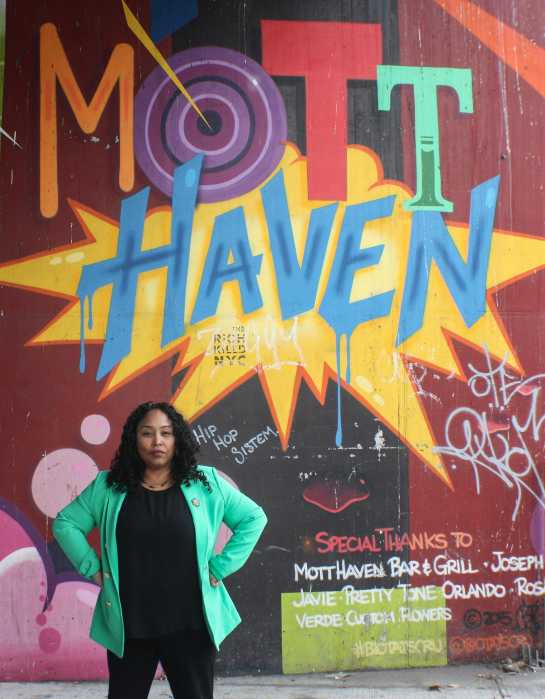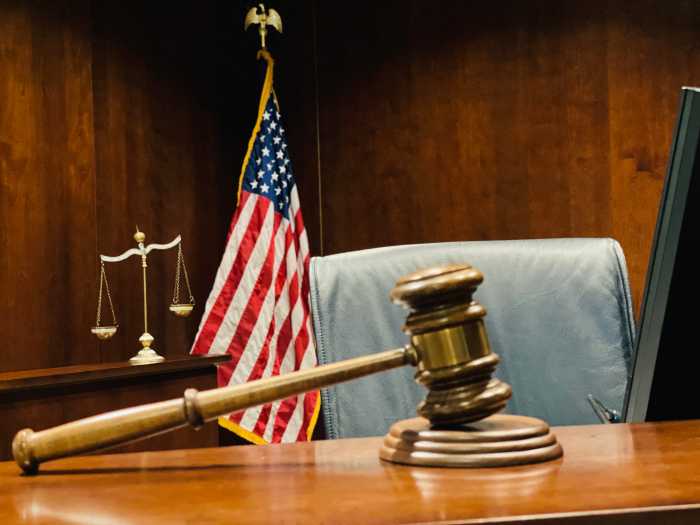
Photo by Milo Hess
BY COLIN MIXSON
There’s nothing new about this Revolutionary holiday.
Hundreds of New Yorkers gathered at Bowling Green to celebrate Evacuation Day on Friday, marking the historic occasion in 1783 when the city — and our new nation — finally rid itself of British occupation.
The little-known colonial-era holiday doesn’t enjoy the same popularity as it did back in the 18th and 19th centuries, but this year’s event proved locals are slowly learning to embrace the once lively anti-British festival as a distinctly Downtown tradition, according to a local historian.

Historical reenactors came to Federal Hall decked out in their finest colonial-era duds.
“This was the biggest Evacuation Day celebration in 100 years!” proclaimed James Kaplan, president of the Lower Manhattan Historic Association. “It was great!”
The holiday traces its beginnings back to Bowling Green three years after the end of the Revolutionary War. The British, which had made Lower Manhattan their headquarters during the hostilities, had lingered on there to manage the repatriation of loyalists and other logistics of ending royal rule. When the day finally came for the British army to bug out for good, on Nov. 25, 1783, those rascally redcoats nailed the Union Jack to the top of a greased flagpole at Bowling Green in a final act of spite.
With Gen. George Washington on his way to Lower Manhattan for the first time since the opening battles of the war, locals scrambled to get the offending banner down and raise the flag of the new nation, but all attempts to scale the slick flagpole failed. Then an army veteran named John Van Arsdale, refusing to allow the drama of Washington’s long-awaited return to be spoiled, marched over to a nearby hardware store and purchased some wooden cleats that enabled him to ascend the slippery pole, and replaced the British flag with the new country’s 13-starred banner.
Van Arsdale’s ascent birthed a Downtown tradition that would be celebrated annually with a ceremonial flag raising until 1916, when it was decided amidst World War I that the observance of a distinctly anti-British holiday was inappropriate given the country’s new-found alliance with its former overlords across the Pond.
But Evacuation Day was for many years a hugely popular event, at first celebrated by Revolutionary veterans, then their descendants, and later by Irish immigrants — who had their own bone to pick with the English. Accounts of the holiday’s centennial observance in 1883 put attendance at anywhere between 200,000 and a million spectators, according to Kaplan.

The Veterans Corps of Artillery led a march from Fedearl Hall down to Bowling Green — which last year was co-named Evacuation Day Plaza.
After the Great War, the tradition was only observed in sporadic fits of Revolutionary sentiment, including a 2008 celebration of the holiday’s 225th Anniversary produced by the Sons of the Revolution, who staged a parade at Bowling Green and hosted a commemorative feast at the group’s Downtown headquarters, Fraunces Tavern.
But it wasn’t until 2014, when Kaplan conspired with Bowling Green Association head Arthur Picollo to revive the holiday in a more traditional sense, that locals gathered for a flag raising ceremony at America’s first public park where Van Arsdale stuck it the British more than two centuries earlier.
That event only attracted a modest crowd of about two-dozen spectators and enthusiasts that year, but subsequent events fared better, and Kaplan claims some 400 Revolutionary revelers turned out to witness this year’s celebration.
The celebration began at Federal Hall on Wall Street with a salute from New York’s oldest serving military organization, the Veteran Corps of Artillery — founded in 1790 by none other than Van Arsdale himself — before the soldiers led the crowd on a march down Broad Street to Bowling Green, which last year was co-named Evacuation Day Plaza. There they raised the 13-starred flag of the young United States.
The holiday is now 234-years removed from its colonial origins, but the same joyous spirit of liberty pervaded the event, according to the president of the New York chapter of the Sons of the Revolution.
“It was very festive,” said Ambrose Richardson. “We’re celebrating the realization of independence.”
And while the celebration more or less observed the traditional forms of the age-old holiday, there was one major difference — no one was calling for the Queen’s head.
“That was then and this is now,” said Richardson. “It’s not anti-British at all.”






































